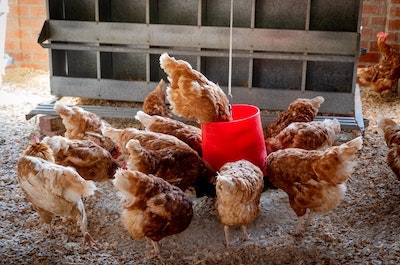
Cracking Open the Facts
Here’s what you need to know:1
- Currently 24 states have identified commercial and backyard flocks with the bird flu, leading to more than 20 million birds being destroyed and an increase in poultry and egg prices.
- The spread of the avian influenza is occurring naturally among waterfowl and can infect wild birds, domestic poultry and other animals, though rarely humans. Commercial operations are focused on biosecurity measures to prevent/decrease spread. Having visited a poultry operation a few years ago in Georgia, I can confirm preventing illness/disease spread is top of mind. No one entered a building without being covered from head to toe in protective clothing.
- Based on current national pricing, egg prices have jumped to $2.88 a dozen for conventional eggs — up more than 50% over the past two months when the first case of avian influenza was identified. Consumers also can expect to pay more for organic or specialty eggs.
- Human infections are rare. If any did occur, it would affect only those individuals directly involved in the production and care of poultry.
- Eggs are safe. When it comes to eggs or poultry, products in the grocery are safe! Infected birds are removed from the supply chain.
- Price and supply will be the main consumer facing issue. Price range will depend what type of eggs are purchased.

Selecting the type of egg depends on what you we value. Here is an overview of the egg types from the Egg Nutrition Center.2
- Conventional — Eggs are laid by hens living in cages with access to feed, water and security. The cages serve as nesting space as well as for production efficiency. In this situation, the birds are more readily protected from the elements, disease, and natural and unnatural predators.
- Free-Range — Eggs are produced by hens that have access to outdoors in accordance with weather, environmental or state laws. In addition to consuming a diet of grains, these hens may forage for wild plants and insects and are sometimes called pasture-fed hens. Floor space, nesting space and perches are provided.
- Cage-Free — Eggs are laid by hens in indoor floor operations, sometimes called free-roaming. Hens may roam in a building, room or open area such as a barn or poultry house. They have unlimited access to fresh food and water, while some may also forage for food if allowed outdoors. Cage-free systems vary and include barn-raised and free-range hens, both of which have shelter that helps protect against predators.
- Organic — Eggs are produced according to national U.S. Department of Agriculture organic standards. Organic eggs are produced by hens fed rations with ingredients that were grown without most conventional pesticides, fungicides, herbicides or commercial fertilizers.
The Egg-cellent Choice
Regardless of how the egg is produced or processed, all are packed with protein and nutrients, providing an egg-cellent return on your purchase. An egg is a bundle of protein and nutrients underneath the shell. One large egg has six grams of protein and all the essential amino acids along with eight essential nutrients including Vitamin B12, Biotin, Iodine, Selenium, Choline, riboflavin, pantothenic acid and lutein. Note: Choline and Lutein are important for cognition and brain health.3
Even though we may pay a little more in the coming months, we can be assured that our eggs are safe and full of goodness. Whether you scramble, poach, fry or devil them, eggs provide a burst of nutrition in every bite and are always an egg-cellent choice.
References
1. “24 States Confirm ‘Bird Flu’ Outbreaks In Poultry,” Agweb.com, by Rhonda Brooks, April 5, 2022.
2. “Egg Production,” The Incredible Egg, American Egg Board.
3. The Incredible Egg, American Egg Board.
